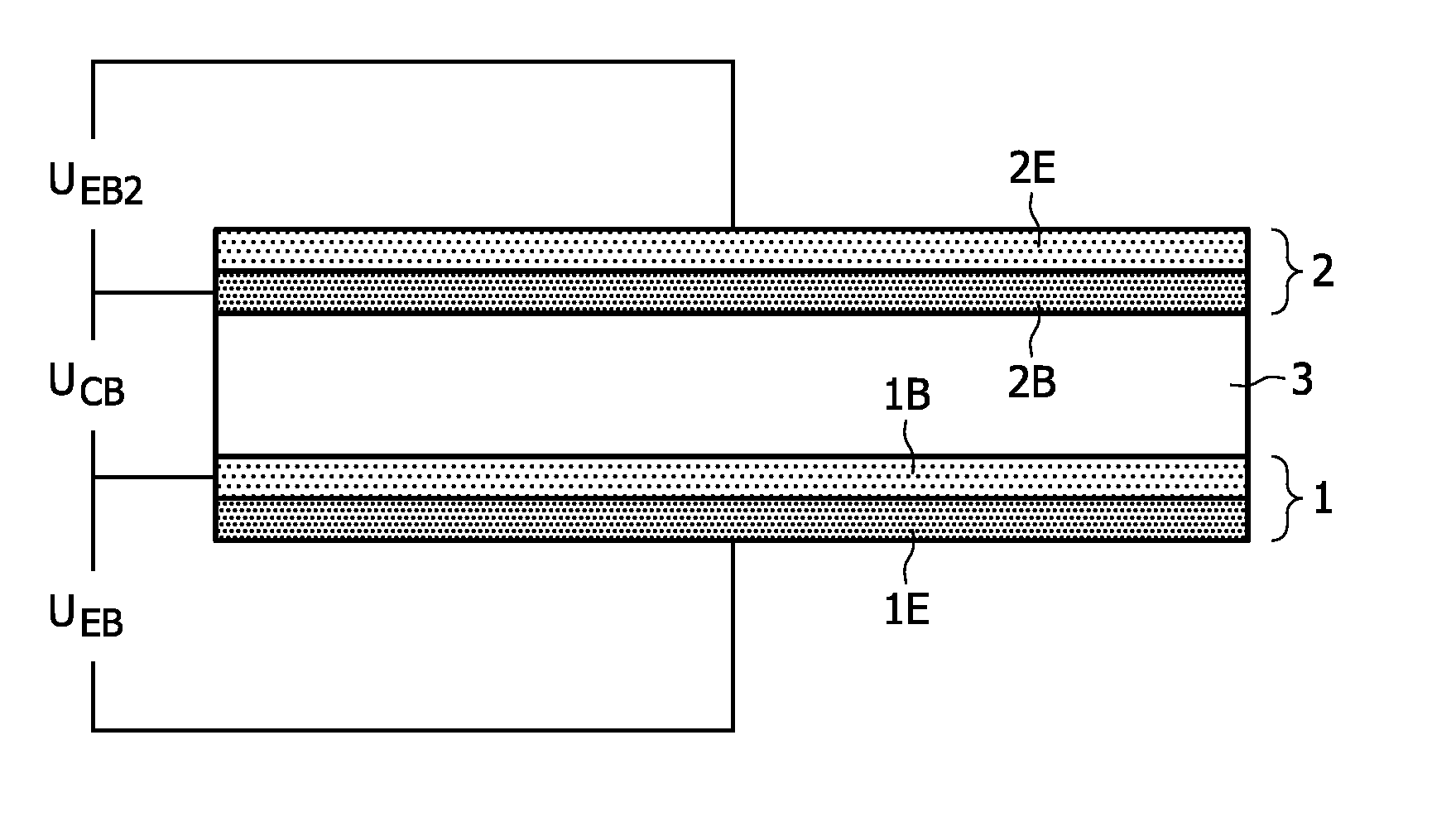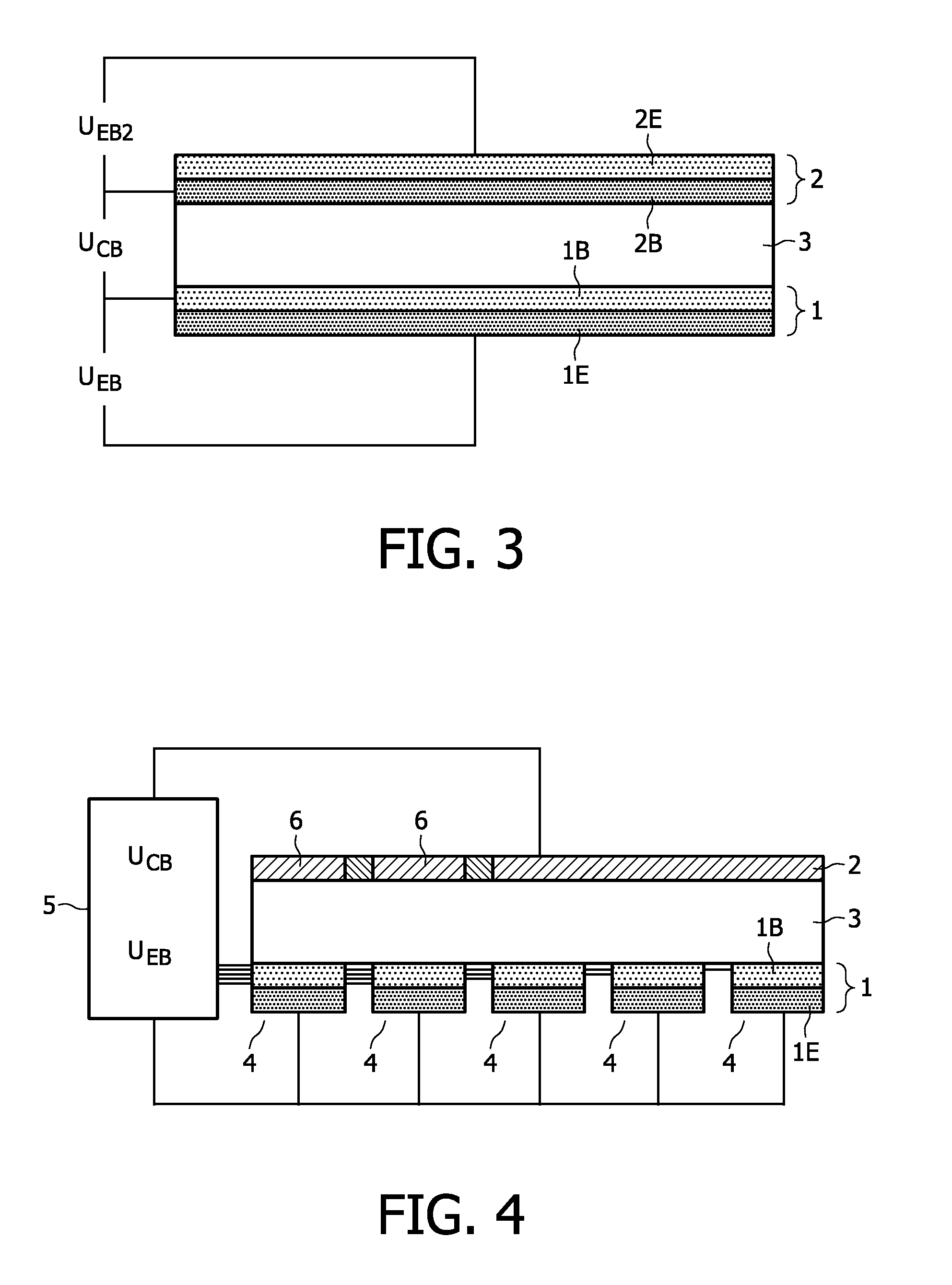Organic light-emitting device with adjustable charge carrier injection
a light-emitting device and charge-carrying technology, which is applied in the direction of static indicating devices, solid-state devices, instruments, etc., can solve the problems of large number of charge-carrying devices, the wrong type of charge-carrying carriers can show a worse lifetime behavior, and the hole or electrons reaching the opposite electrodes are not able to excite the light-emitting molecules, etc., to achieve the effect of more precise adjustment of the width and position
- Summary
- Abstract
- Description
- Claims
- Application Information
AI Technical Summary
Benefits of technology
Problems solved by technology
Method used
Image
Examples
Embodiment Construction
[0037]FIG. 1 shows a side view of an organic light-emitting device according to prior art. The organic light-emitting layer 3 (or layer stack) is arranged between a first electrode 1 and a second electrode 2. In some cases, the organic layer stack comprises only one layer, the organic light-emitting layer 3. In other embodiments, the organic layer stack may comprise additional layers, e.g. hole / electron transport layers, hole / electron injection layers and / or hole / electron blocking layers as well as different organic light-emitting layers emitting light of different colors. The operation voltage UDrive is applied between both electrodes 1 and 2. Assuming electrode 1 as the cathode and electrode 2 as the anode, electrons are injected from cathode 1 while holes are injected from anode 2. The location of the recombination zone (area, where electrons from the cathode and holes from the anode will recombine) depends on structure, design and material properties and applied UDrive. Due to t...
PUM
 Login to View More
Login to View More Abstract
Description
Claims
Application Information
 Login to View More
Login to View More - R&D
- Intellectual Property
- Life Sciences
- Materials
- Tech Scout
- Unparalleled Data Quality
- Higher Quality Content
- 60% Fewer Hallucinations
Browse by: Latest US Patents, China's latest patents, Technical Efficacy Thesaurus, Application Domain, Technology Topic, Popular Technical Reports.
© 2025 PatSnap. All rights reserved.Legal|Privacy policy|Modern Slavery Act Transparency Statement|Sitemap|About US| Contact US: help@patsnap.com



